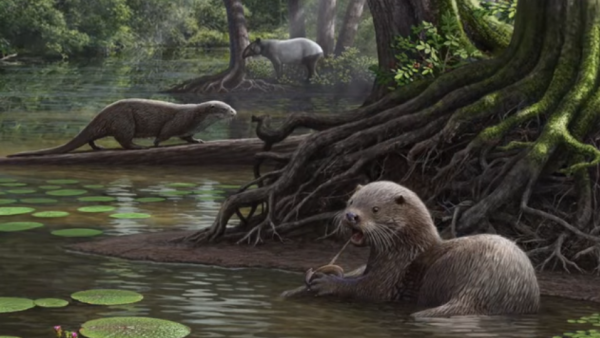
Otters today are just as big as the seals but the prehistoric ones appeared to be much bigger in size. Researchers discovered that some six million years ago the said carnivorous mammal was twice as big as the present largest otter in South America. In comparison, the size could be that of a modern wolf.
Fossils of a sizable extinct otter which features big, powerful jaws has been estimated to weighed around 50 kilograms. This weight makes the otter appear to be bulkier than the leopard of today. The ancient remains of the animal was dug up in Yunnan Province in China.
In a study that was published on Jan. 22 at the Journal of Systematic Palaeontology, Chinese and American researchers revealed that they found species called Siamogale Melilutra. It has been classified as a member of an ancient genealogy of extinct otters which goes back 18 million years at the least.
The paper contains description of the otter's fossils and it was said that its skull measures 21 cms. or 8 inches and it has sharp teeth that can tear off mollusks from their shells. Roughly, these species lived on earth 6.2 million years ago.
Science News reported that the giant otters' habitat was located to be in a swampy are with humid climate. The exact spot was identified as the present Yunnan province in China.
The research team which consists of Chinese and American scientists first discovered the remains of the otter in 2010. The bones were crushed so they cannot reconstruct the fossil pieces.
According to Denise Su, the head of paleobotany and paleoecology at the Cleveland Museum of Natural History, they instead took CT scans and then based on the cranium, the team digitally reconstructed the pre-historic otter's skull. The researchers studied the teeth as well and this gave them clues about the otter's evolution times.
Finally, by studying the fossilized teeth, the researchers surmised that the molars of the Siamogale Melilutra suggest that they evolved at least four times among the other otter species. This means that otters do not share common origin because the ancient and present otter types have evolved on their own via convergent evolution.



